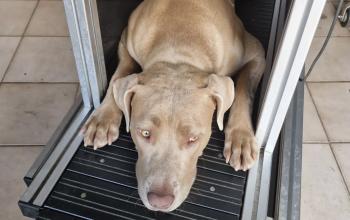- Delivered worldwide
- 10-year warranty
- Best value for money
- Delivered worldwide
- 10-year warranty
- Best value for money
When a dog is considered "old" varies greatly among dogs. This is partly due to the breed of dog. For example, larger dogs age faster than small dogs.

When a dog is considered “old” varies greatly among dogs. This is partly due to the breed of dog. For example, larger dogs age faster than small dogs. Large dogs are senior by age 7 and sometimes even 6. Medium-sized dogs become senior by age 8. Smaller dogs, on the other hand, are juniors until as late as age 10. Of course, this is not as specific as described above. There are all sorts of factors that affect your dog’s quality of life. Health has a significant part in this. Unfortunately, as dogs age, this is often accompanied by health deficiencies. What stands out?
Thus, the risk of age-related diseases increases from an average age of 8 years. Dogs are getting older both physically and mentally. Behavioral changes due to old age can be seen, for example, in fearful behavior for certain people or situations, decreasing motivation to play or walk, a disturbed rhythm of life (think of unrestraint, forgetfulness, poorer responsiveness and/or deeper sleep). Your dog may become more quickly disoriented in his or her surroundings. This is often related to declining vision and hearing. Older dogs react less alert to sound stimuli, listen more poorly and are also less likely to recognize people and places.
Some dogs even experience cataracts, where there is clouding on the lens of the eye. Other age-related discomforts your dog may face include dental problems (inflamed gums or bad breath), osteoarthritis/joint wear, heart and/or kidney problems, obesity, diabetes, tumors, incontinence and dementia. Many of the symptoms are interrelated. For example, dental disease can cause heart and kidney disease through the bloodstream, and obesity can worsen heart problems or osteoarthritis and feed metabolic disease (diabetes).
Many symptoms of aging are related to exercise. Osteoarthritis makes exercise difficult but, on the other hand, even more important. Decreased stamina and heavy breathing can indicate poor fitness but also heart problems. Obesity, in turn, is the result of too little combustion. Older dogs are simply less active but generally get the same amount of food.
Sufficient exercise, of course, is not exclusively important once your dog becomes a senior. A dog treadmill can help maintain fitness (early) and strengthen the body in a safe, fun way. Need more information on this?
© 2025 – designed by Teijgelermedia